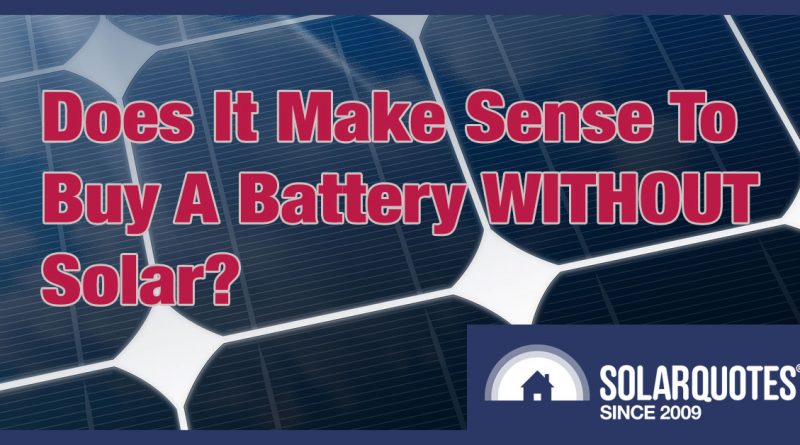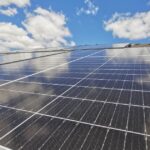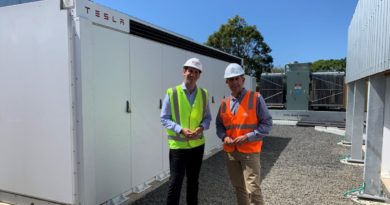Buying A Battery Without Solar Is No Longer A Crazy Idea
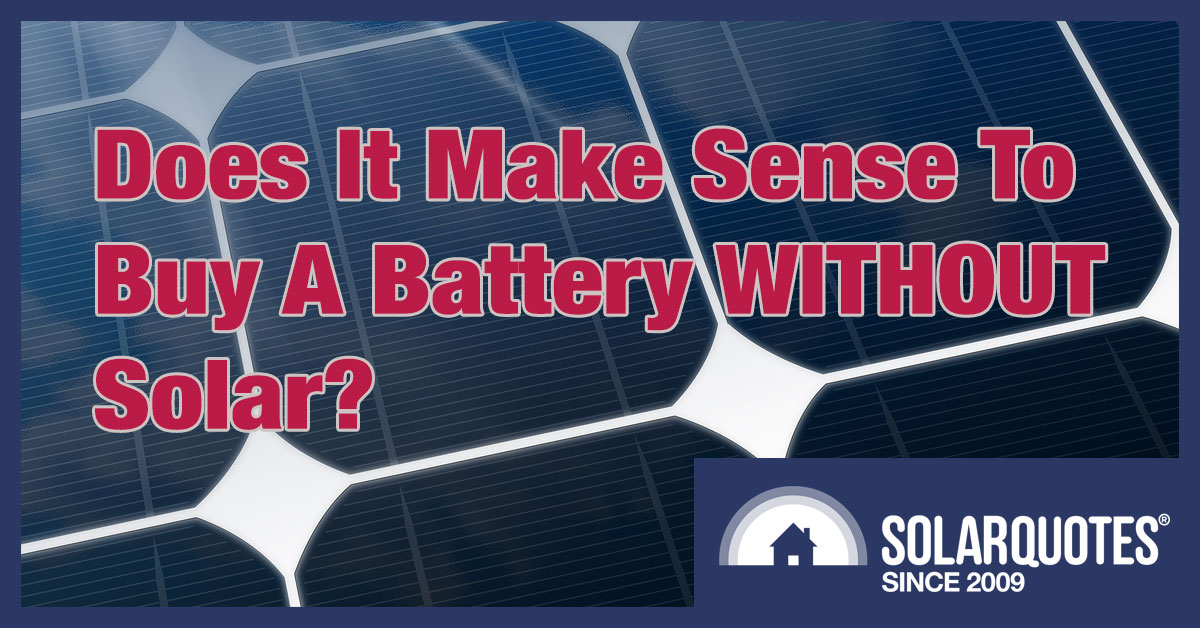
SA’s New Solar Sponge Tariffs Can Make Home Batteries Without Solar Panels Pay
South Australia has a lot of solar. Relative to total generation it’s well ahead of any other state.
All this solar power reduces daytime wholesale electricity prices. This is a good thing. Not only is solar energy clean, it cuts costs for homes and businesses.
In addition to low daytime wholesale prices, the state’s electricity distributor — SA Power Networks (SAPN) — also has a time-of-use “solar sponge” network tariff. It charges under 4 cents per kilowatt-hour distributed between 10:00 am and 3:00 pm.
Homes and businesses don’t pay this network tariff directly – it only makes up part of the retail price. But electricity retailers have taken advantage of low wholesale prices and these lower network costs to offer time-of-use plans with very low rates for grid electricity in the middle of the day.
The large difference between the daytime “solar sponge” off-peak rate and the high evening peak rate now make it possible for a home battery to pay for itself even if a household doesn’t have solar panels.
Buyer Beware
But before everyone who can’t a install solar power system runs out to buy a home battery, be careful. A lone battery can only pay for itself if a home has high evening electricity consumption. The average home without solar will only lose money, even using the South Australian home battery subsidy of up to $2,000.
To make a battery-without-solar pay, you must:
- have an electricity consumption high enough to almost always drain the battery during the evening peak period
- know that’s not likely to change
- be careful what home battery you buy
If you can tick those 3 boxes, a battery might pay for itself within its warranty period.
Finally, be aware that this analysis only compares time-of-use plans. Depending on your consumption patterns, the cheapest way to power your home may simply be a low standard tariff that charges the same cost per kilowatt-hour 24/7, where available1.
Solar Is Still A Better Investment
If you have a roof that is suitable for panels, get solar first. The return from solar power is far better, and if you get a home battery, it can improve its payback.
The Three Cheapest Midday Electricity Plans
I first wrote about the solar sponge tariff 18 months ago and mentioned it could theoretically allow home batteries to pay for themselves without solar panels. At the time, retail solar sponge tariffs weren’t available, but now there are ones offering grid electricity from 10:00 am to 3:00 pm for around 7 cents per kilowatt-hour. The three retailers with the lowest rates are:
- GloBird Energy: 6.6 cents
- IO Energy: 7 cents
- ReAmped Energy: 7.59 cents
Those low prices are clearly useful for anyone wanting to charge a battery during the day, whether it’s for their home or their car.
Who Benefits From A No-Solar Battery?
Not installing solar panels isn’t something I normally recommend, but some people…
- Don’t have a roof.
- Have a roof that’s not structurally suitable for solar or heavily shaded.
- Are renters who can’t convince their landlord to get solar.
- Have solar panel phobia. (Unlikely, but possible.)
…and so can benefit from a battery without solar with the right time-of-use plan — provided their circumstances are suitable. To begin with, only homes with smart meters can have time-of-use tariffs, so that’s the first hurdle.
If you get solar now — or have any major electrical work done — a smart meter will be installed. If you had solar panels installed in the last two years, you probably have a smart meter.
In this article I’m only considering how a no solar home can save money with a time-of-use tariff. I won’t look at plans that directly expose households to wholesale electricity prices, such as Amber Electric. I also won’t look at demand tariff plans2. Both these are considerably different from time-of-use tariffs, and I, quite selflessly, don’t want to confuse readers by including them. Also, quite selfishly, I want to avoid the extra work.
The Spongiest Plan
South Australia has a special time-of-use tariff that — as far as I’m aware — is as unique to the state as Fruchocs. It’s a seasonal tariff with a peak period only in the heatwave-prone half of the year. This is because in the late afternoon, solar energy output plummets, but the demand for air conditioning remains high.
In the cooler half of the year, households only pay the Shoulder and Off-Peak rates. The plans with the lowest solar sponge Off-Peak rates are all like this, but ones with a peak period all year are also available.
The plan with the lowest Off-Peak rate is GloBird Energy’s BOOST Residential (Flexible Rate Plus). The image below shows the Peak, Off-Peak, and Shoulder rates — as well as the Peak and Off-Peak times:
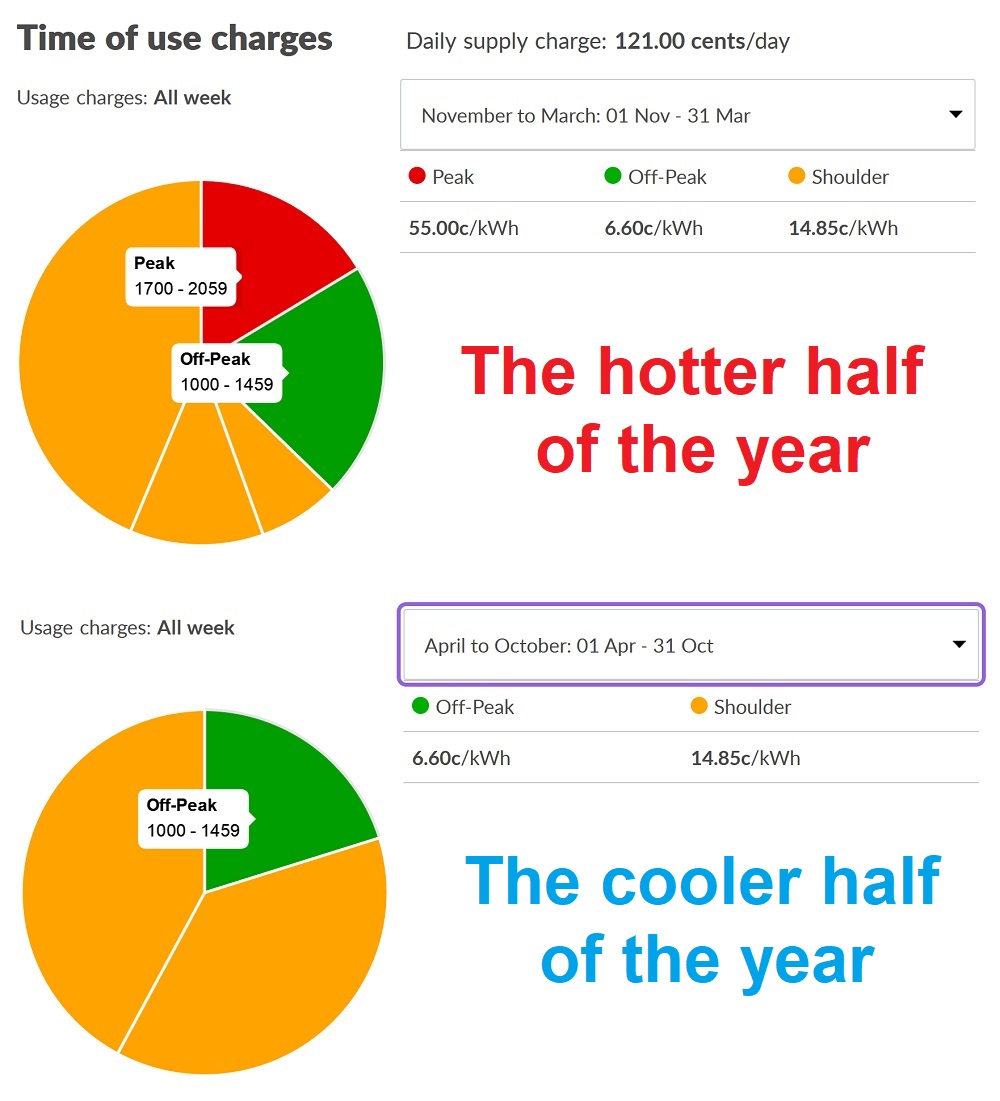
All times that are not labelled as Peak or Off-Peak are Shoulder. Images were stolen from the government Energy Made Easy site, but I added the red and blue text.
With this plan, outside of the 4 hour evening Peak period from the 1st of November to March 31st, households will never have to pay more than 14.85 cents per kilowatt-hour for grid electricity. That’s a good deal for Adelaide. But be sure to minimise consumption during the peak period because it’s a hefty 55 cents per kilowatt-hour.
Home Battery Subsidy
To work out if a battery can pay for itself without solar, I’ll need an estimate of how much the battery costs, depending on whether or not it can receive the SA Home Battery Subsidy, which is up to $2,000.
Looking at the latest subsidy terms document I can’t see anything excluding homes without solar panels, so it looks like it’s allowed.
You Can’t Take It With You
One of the subsidy conditions is you can’t remove the battery from where it’s installed without written permission from the SA Government. So if you are a renter who wants to get a battery and take it with you when you move, you can’t use the subsidy unless you’re really optimistic about getting written permission to haul it away.
Home Battery Cost
The cheapest home battery I’d be game to install on a home containing people I like is around $9,000. This is the fully installed cost for a battery with 10 kilowatt-hours of usable capacity when new. But this is for a system without backup. Adding that will push the price over $10,000.
While almost everybody who gets a battery wants backup, I’ll use the lower cost of $9,000. The SA subsidy is $200 per kilowatt-hour3 up to $2,000. I’ll assume the full amount is received, making the total installed price $7,000.
Home Battery Efficiency
I’ll assume the battery has a round trip efficiency of 90% — a reasonable figure for a home battery. (According to Tesla, Finn’s Powerwall 2 has operated at 90% efficiency over the past year4.) This means it will have to be charged with 1.11 kilowatt-hours of grid electricity for each kilowatt-hour of stored electricity provided.
Battery Deterioration
Batteries deteriorate over time and with use. Some warranties, such as for the Powerwall 2, only promise the battery will retain a minimum of 70% of its original capacity. Other manufacturers such as LG Chem and Huawei only give a minimum of 60%. I’m going to assume the battery only suffers modest deterioration and averages 90% of its original capacity over the time it’s used. For a battery with 10 kilowatt-hours of usable storage when new, this will be an average of 9 kilowatt-hours of usable storage.
Electricity Prices
For this estimate, I’ll assume electricity prices remain constant in real terms and all the figures I give will be in today’s money and not adjusted for inflation. I’m not going to attempt to account for capital costs. This makes the estimate simplistic, but that can’t be helped because I’m a simplistic kind of guy.
Best Case Battery Scenario
To see if a home battery can pay for itself without solar, I’ll first consider a best-case scenario where the battery is used at full capacity every day for 10 years. It’s fully charged with grid electricity each day during the Off-Peak period and fully discharged in the evening Peak period for the half the year there is one. For the rest of the year, the battery is discharged during the shoulder period.
Cost of charging: With 90% efficiency, it will cost 66 cents to fully charge a battery with 9 kilowatt-hours of usable storage during the Off-Peak period. This is $241 over a year.
Peak consumption avoided: Discharging 9 kilowatt-hours during a peak period will avoid using $4.95 worth of grid electricity. There are 181 days in the 6 months there is a peak period, so that will total $896 over a year.
Shoulder consumption avoided: Discharging 9 kilowatt-hours during a shoulder period will save a household $1.34 in grid electricity. There are 184 days without a peak period, so this will save $246 over a year.
Total Savings: The savings from discharging the battery during Peak and Shoulder periods over a year come to $1,142. After the $241 cost of charging is subtracted, the total savings are $901. I’ll make this a nice round $900.
If the battery warranty is 10 years5, by the time it ends its technically possible for a household to save $9,000. This will put them $2,000 ahead even if the home battery fails the day after the warranty ends. If the battery operates a total of 13 years before failing, the household will be $4,700 ahead. That’s a return of almost 4% per year.
If the battery lasts 15 years, it will put the household $6,500 ahead for a return of 4.4%.
I won’t speculate further than that because expecting a home battery that is fully cycled every day to last beyond 15 years is too optimistic for me, even in this rosy scenario.
Unfortunately, in real life, things aren’t likely to turn out this well.
A More Realistic Scenario
If your home has high electricity consumption and you’re certain almost all a battery’s stored energy can be used during peak periods in the 181 days of the year they occur, then savings could be close to the rosy scenario I outlined above and come to over $800 a year.
But even for high electricity consumption households, this is not a realistic assumption. Even homes that spend over $1,000 on electricity each quarter will regularly fail to use all the stored energy in a battery during some peak periods. There is a considerable amount of randomness in evening energy consumption as people go out or take holidays.
If we assume a household only manages to use half the battery’s stored energy during peak periods and uses the rest during the Shoulder period, then the savings will come to around $570 a year. This means the battery will have to operate for over 12 years before breaking even on the $7,000 investment.
The savings will be lower for a typical South Australian home with average consumption, but how low will depend on electricity consumption habits.
If you currently have a smart meter, you can get an idea of how much grid electricity your home consumes during peak periods by checking consumption figures online.
A Smaller Home Battery May Not Help
I’ve assumed the household uses a battery with 10 kilowatt-hours of usable storage when new, but if a smaller battery is used, it will be easier to consume most or all of the stored energy during peak periods. But because smaller home batteries cost more per kilowatt-hour, the return will be worse even under excellent conditions.
A VPP Can Improve Payback
One way to boost the savings from a battery is to join a Virtual Power Plant (VPP). This can provide payments in return for letting the VPP use the battery to support the grid but has the disadvantage of the owner losing full control over their home’s battery. Also, depending on how hard the VPP uses the battery, it may significantly degrade it.
I recommend being very cautious when signing up for a VPP. The terms can be complex, making it difficult to determine how much benefit it’s likely to give. If, after accounting for the disadvantages, you think there’s a net benefit of $250 per year from joining a VPP, that’s enough to substantially improve the return from installing a home battery without solar panels.
Assuming electricity bill savings from having a battery come to around $500 per year, an extra $250 annually from VPP payments will give a subsidised battery with an installed cost of $7,000 a simple payback time of under 10 years.
Don’t Fall For The High Peak Price Con
The GlowBird plan I used in this example appears to be one of the better ones available from a cost point of view6. But if there is a plan out there that would give you a lower electricity bill before your battery is installed, then that is the plan you should use to determine how much a home battery will save you. The formula for working out battery savings is…
- Cost of best electricity plan without a battery minus the cost of best electricity plan with a battery.
While these plans can be the same, they usually aren’t. Working out the savings this way is necessary to avoid falling into the trap of thinking a plan with a high peak rate saves you money when it’s doing no such thing.
As an example, here’s what IO Energy’s Lightning time-of-use plan will cost you:
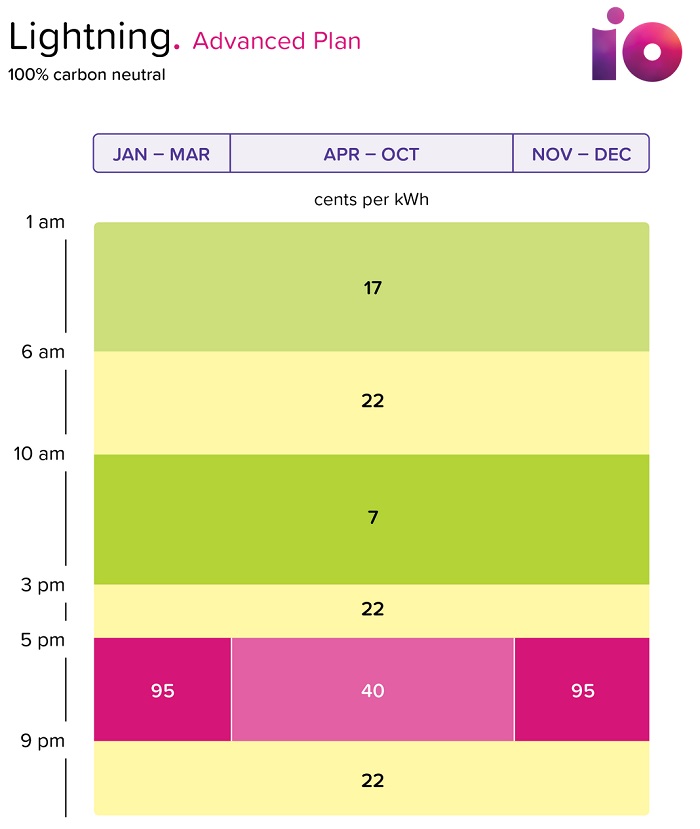

The cost of electricity in the middle of the day is only 7 cents and very similar to the GlowBird plan. But — to me at least — this plan is obviously worse because the Shoulder rate is higher at 22 cents rather than GlowBird’s 14.85 cents; and the Peak rate in the warmer half of the year is far worse at 95 cents rather than GlowBird’s 55 cents.
While it’s obviously a more expensive plan, some people mistakenly think that because the peak rates are higher, their home battery saves them more money by helping avoid those peak rates. But saving around 87 cents compared to peak period electricity for each kilowatt-hour of battery storage discharged is not a real saving if there is the option of simply choosing an electricity plan with a much lower peak rate.
If you make this mistake, you are fooling yourself, but there are unscrupulous electricity retailers out there who are more than willing to help you fool yourself, so beware7.
Home Batteries Without Solar Can Pay
A battery without solar can pay in South Australia but probably only if most of the following apply…
- The right residential electricity plan.
- A battery that’s safe and reliable but not too expensive.
- The SA battery subsidy is used.
- Membership in a financially beneficial VPP.
- Evening electricity consumption is high.
In the future, lower prices may make batteries without solar panels pay for households with average consumption rather than only those with big evening electricity appetites. But, as the amount of battery storage on the grid increases, the cost of electricity in peak periods may decline. This means it’s possible the economics of batteries without solar won’t improve over time.
Of course, while most people would like to make money from having a home battery installed, it’s not a requirement. Some people place a high value on having convenient, quiet, backup and others may simply like the idea of having a battery. Making a profit is not a requirement to do something you’re passionate about. If it were, I would have been married at least one time less.
Footnotes
- Finn tells me he is working on a new tool that will do this analysis for you – stay tuned
- But nothing has recently challenged my opinion that demand tariffs are generally a bad idea for households — even those with batteries.
- $300 for people with an energy concession, but people with energy concessions should probably be extra cautious about getting a battery due to the financial risk involved.
- Note: Tesla doesn’t always tell the truth.
- Note that, when fully cycled each day, many battery warranties won’t last 10 years.
- I have no opinion of GlowBird Energy’s customer service. I did contact them to check the information on the government Energy Made Easy site was correct, but they were unable to confirm it. This sounds bad, but it’s actually pretty run-of-the-mill for Australian electricity retailers.
- Note: Smart unscrupulous retailers may put an idiot who believes their nonsense in charge of convincing you to buy their electricity plans, so don’t rely on your ability to sense deceit to save you.
Original Source: https://www.solarquotes.com.au/blog/battery-without-solar/

